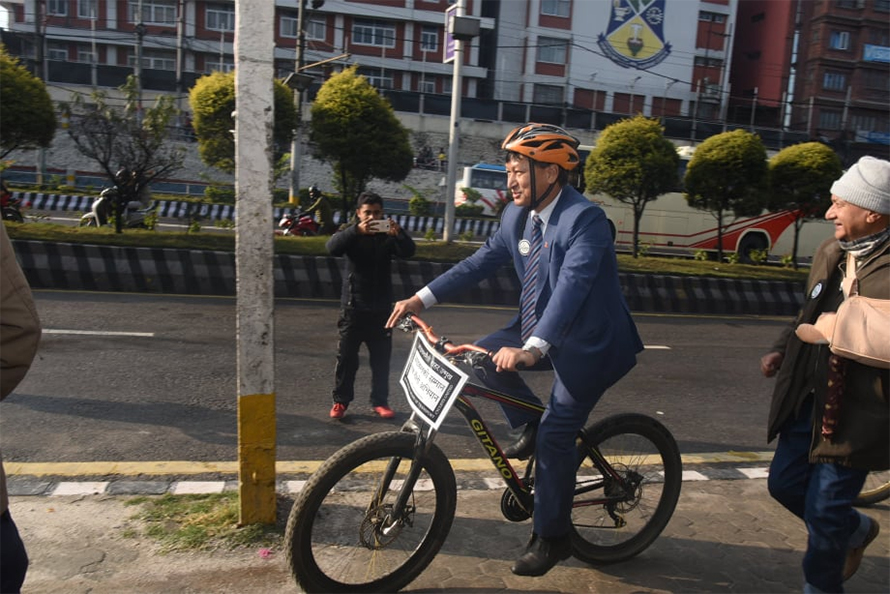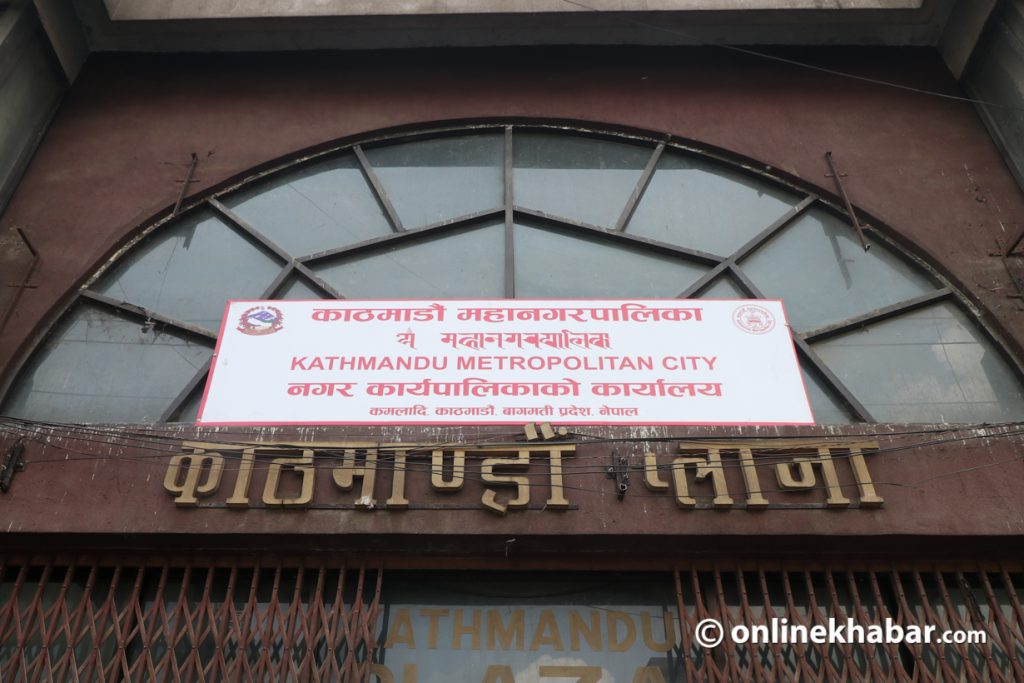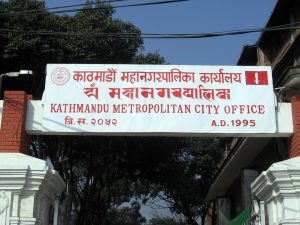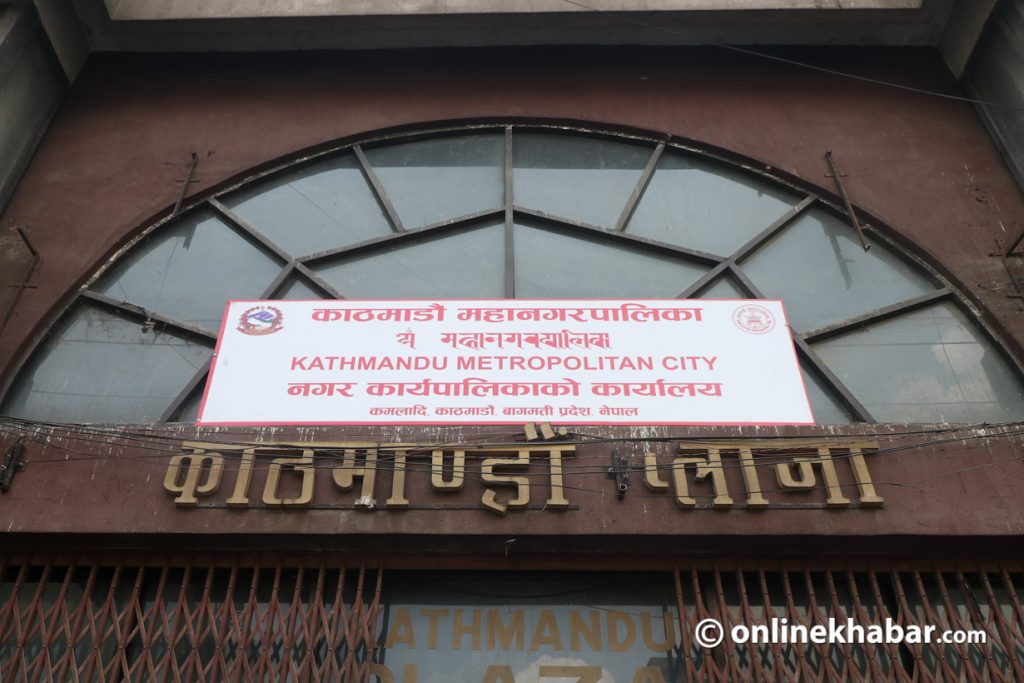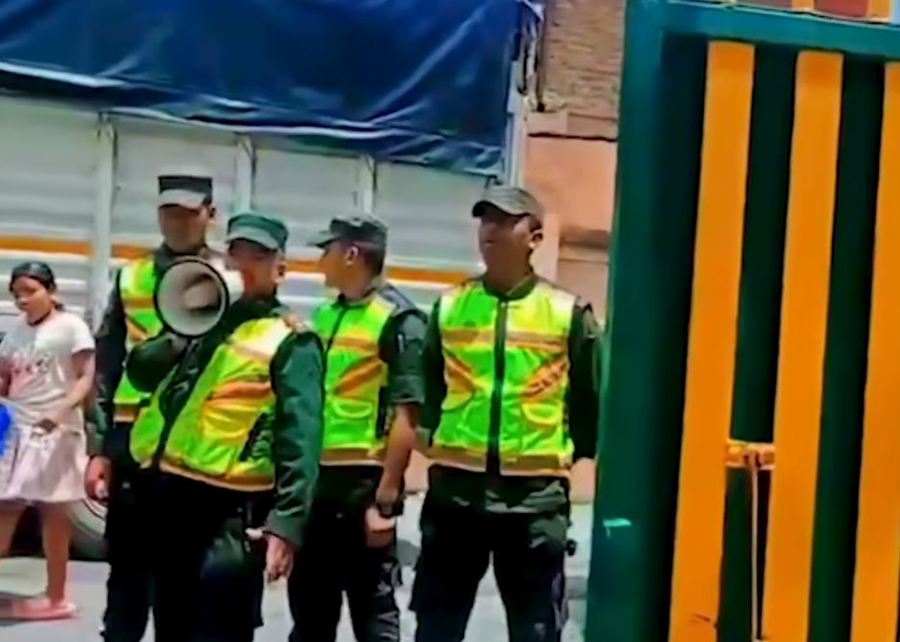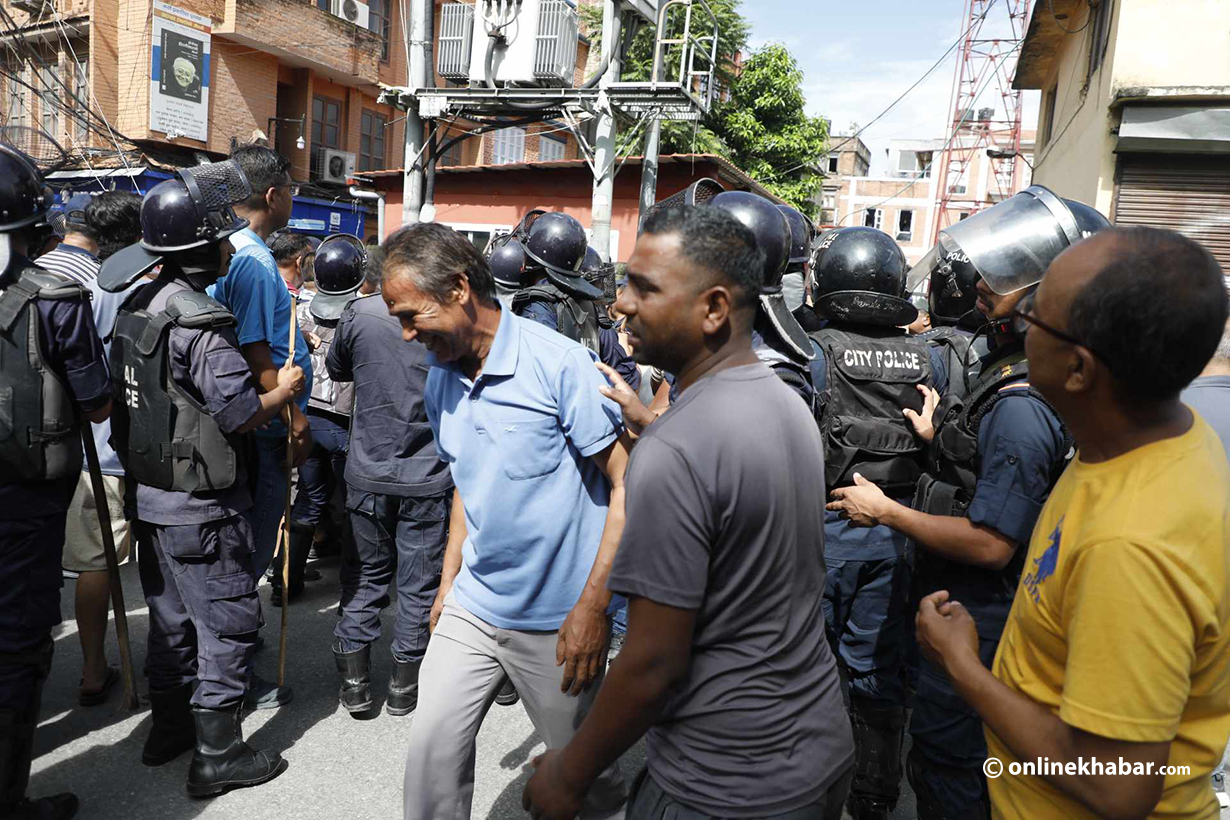When he was the mayoral candidate for the Kathmandu metropolitan city in the 2017 local elections, the CPN-UML leader Bidya Sundar Shakya had said in his manifesto, “An action plan will be prepared to make Kathmandu a bicycle city.” Now, after almost four years of being elected, he has not been able to implement the action plan.
Meanwhile, the existing bicycle lanes have been abandoned and unused due to a lack of interest in their use.
Ambitious plan dumped
The city government had made public the design for bicycle lanes in the Maitighar-Koteshwor road stretch on December 14, 2019. Mayor Shakya had gone to Maitighar to take a photo while riding a bicycle. He also gave a speech on the importance of bicycles and bicycle lanes.
Then, the City Planning Commission announced that Rs 30 million had been allocated in the last fiscal year to manage bicycle lanes on the road stretch. The lanes, which were said to have been constructed in a week then, have not seen even preparations to date with already dedicated lanes on the route.
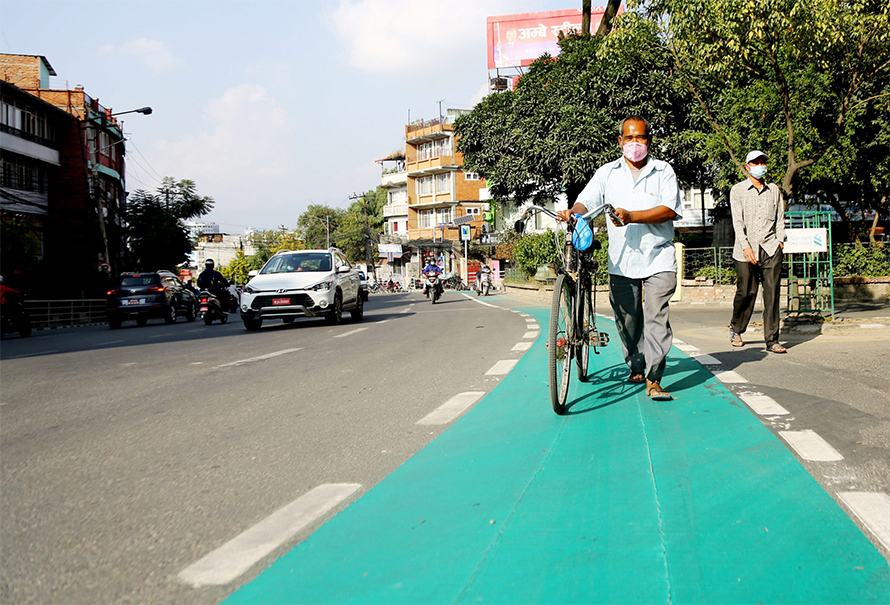
In the meantime, the neighbouring Lalitpur metropolitan city has constructed a bicycle lane on the road from Kupandol to Mangalbazar via Jawalakhel and Lagankhel.
Cyclist Bhumraj Tiwari says the trend of not implementing the promises has become a challenge for urban transport. He says it was worrying that the authorities are discouraging bicycles and promoting others just to increase traffic jams.
Cycling undervalued
Developing the culture of cycling in the city is considered important from an environmental point of view. Cycling campaigners say it will reduce pollution and provide physical exercise for city dwellers.
However, cycling is not safe in Kathmandu due to the lack of separate lanes, roads with heavy vehicles, and drivers’ demeaning attitude.

Cyclist Tiwari says it is wrong to think of bicycles as “rides for the poor” as it is important for health, environment, urban life, and culture. “This mentality has to be removed,” he says, adding, “For cyclists to take their bicycles on the road, authorities have to guarantee the roads will be safe.”
Cyclist Baburaja Rokaya also adds the bicycle culture will not be developed only by making lanes along some roads of the valley, neither will it improve the environment.
Environmentalists have been demanding bicycle lanes in Kathmandu for a long time.
But, the city government’s spokesperson Ishwar Man Dangol says bicycle lanes will not be possible in all areas, adding, “Approval has been sought from the Department of Road for the construction of bicycle lanes in Baneshwor area. The work will soon commence.”
Poor state of the existing lanes

When the Maitighar-Koteshwor section was widened seven years ago, space was allotted for bicycle lanes. But, on the lane, the authorities have laid tiles without signs, turning it into a pedestrian pavement.
Initially, red tiles were laid along the bicycle lane and plain tiles on the pavement, which were later scraped off for laying water supply pipes. Currently, cyclists cannot even recognise the bicycle lane.
The municipal government had plans to operate this lane in a systematic manner but now says the task is not that easy.
Encroachment
The existing bicycle lane along the Maitighar-Koteshwor road is broken at various places. The lane meets railings after intersections at points.
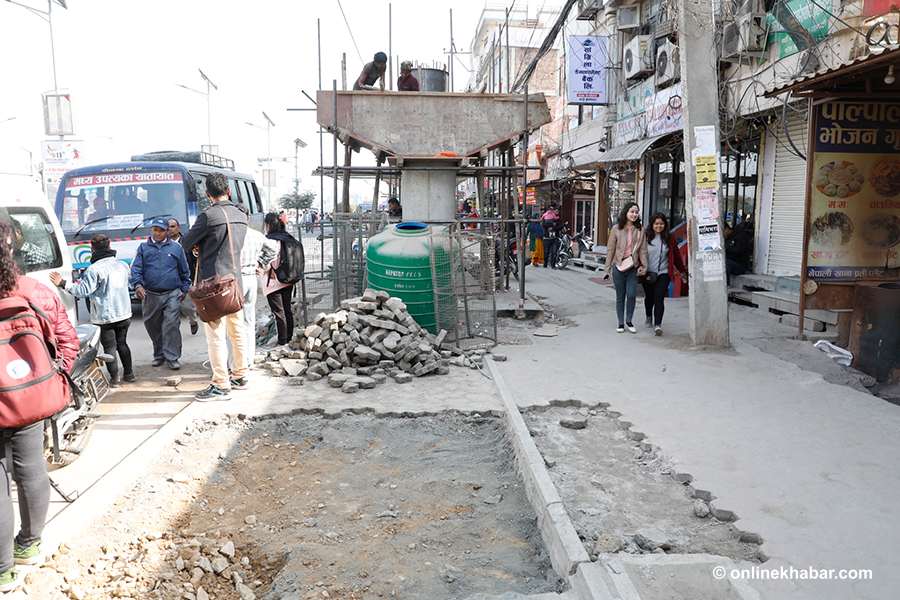
Many places have lanes too narrow for cycling while others are encroached on. On the pavement, there are waiting chairs for passengers, encroaching on the lane, which means people are seen walking on the bicycle lanes.
Plants between the pavement and the bicycle lane have overgrown while in some places, vendors sit for business.
In the meantime, construction materials get piled on bicycle lanes. Somewhere along the bicycle lane, tiles have been uprooted; elsewhere pillars for the pedestrian bridges have been erected on the lane itself.
Likewise, pavements in Maitighar and Koteshwor are used for parking. The pavement and cycle lane outside the government offices, hospitals, hotels, banks, and commercial complexes are full of motorcycles parked there.
As bicycle lanes and sidewalks are filled with parking, passengers have to walk down the road.



